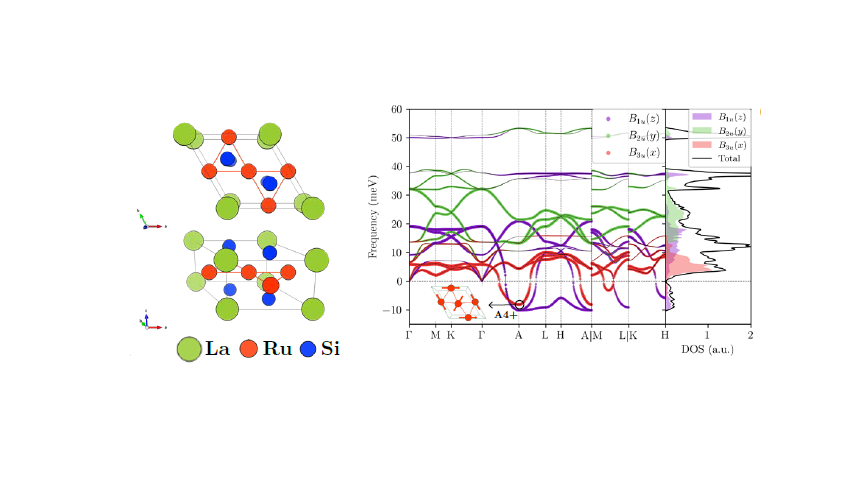Theory of Superconductivity in LaRu3Si2 and Predictions of New Kagome Flat Band Superconductors
We present a comprehensive investigation of the flat-band kagome superconductor LaRu3Si2, which has recently been reported to host charge density wave (CDW) order above room temperature (TCDW≃400 K). The stable crystal structure above the CDW transition is identified via soft phonon condensation and confirmed to be harmonically stable through ab initio calculations, consistent with recent X-ray diffraction refinements. The electron-phonon coupling (EPC) in LaRu3Si2 is found to be mode-selective, primarily driven by strong interactions between Ru-B3u phonons (local x-direction, pointing toward the hexagon center) and Ru-Ag electrons (local dx2−y2 orbital) within the kagome lattice. Using a spring-ball model, we identify this mode-selective EPC as a universal feature of kagome materials. Employing the newly developed Gaussian approximation of the hopping parameters, we derive an analytical expression for the EPC and demonstrate that superconductivity in LaRu3Si2 is mostly driven by the coupling between the kagome B3u phonons and the Ag electrons. The impact of doping is also investigated, revealing that light hole doping (approximately one hole per unit cell) significantly enhances the superconducting critical temperature Tc by 50%, whereas heavy doping induces structural instability and ferromagnetism. Furthermore, high-throughput screening identifies 3063 stable 1:3:2 kagome materials, of which 428 are predicted to exhibit superconductivity with Tc>1 K, and the highest Tc reaching 15 K. These findings establish LaRu3Si2 and related materials as promising platforms for exploring the interplay among kagome flat bands, EPC, and superconductivity. Additionally, they may offer valuable insights into potential limitations on the Tc of flat-band superconductivity in real materials.
Read the whole article by Deng et al. on arXiv.
